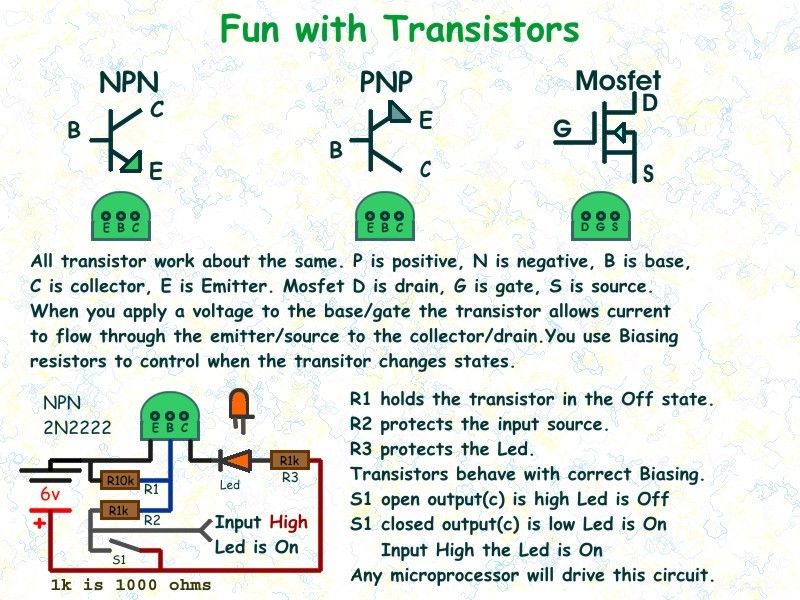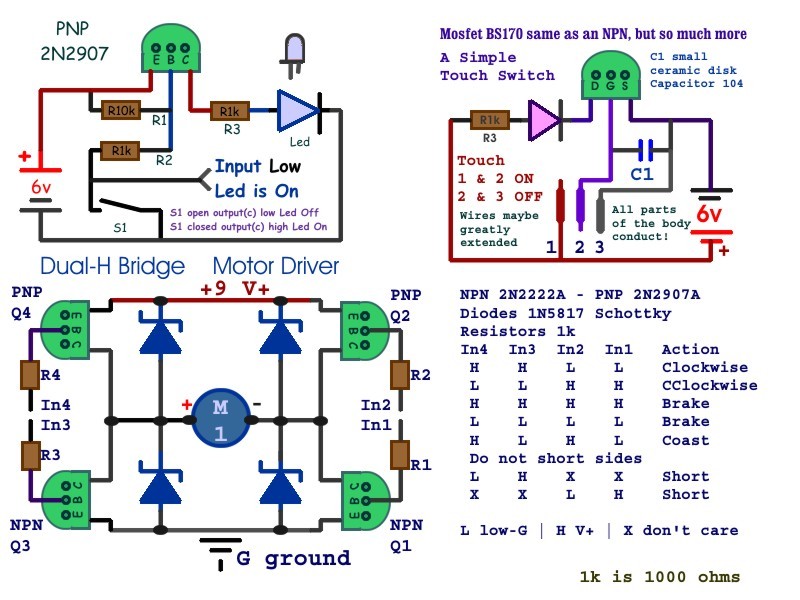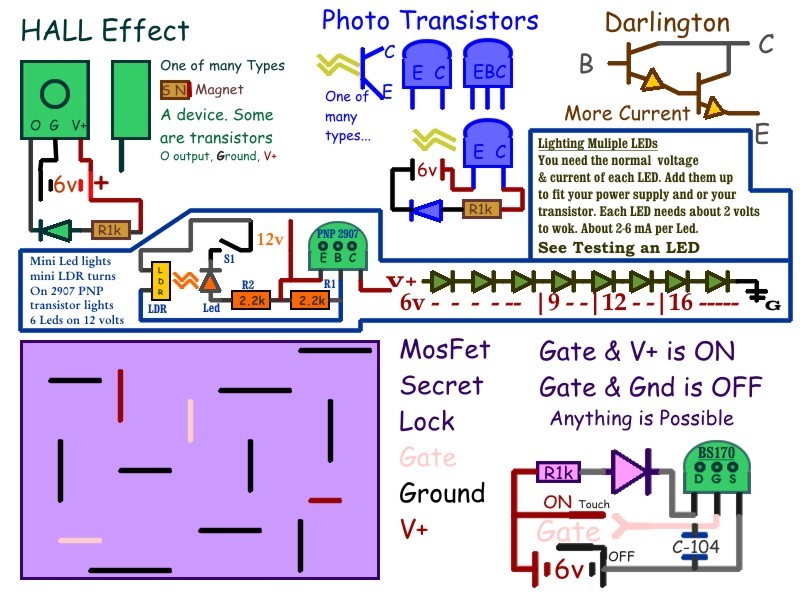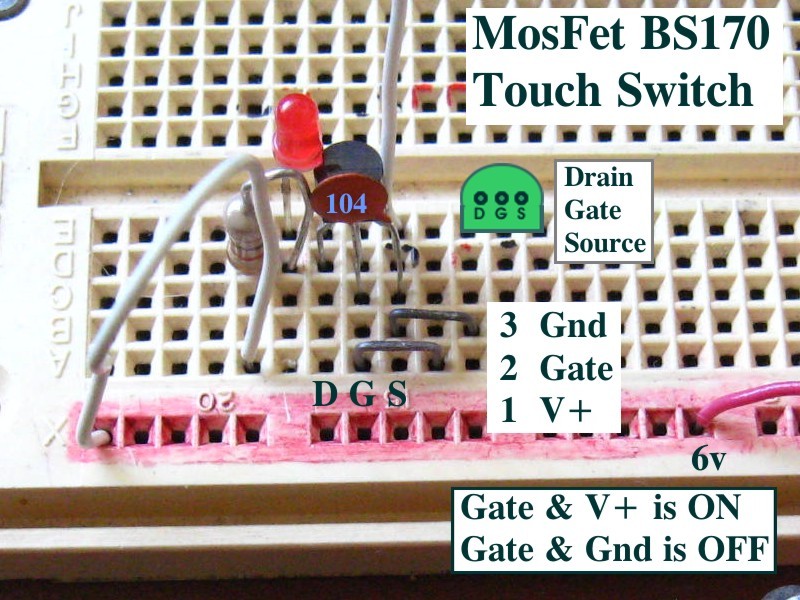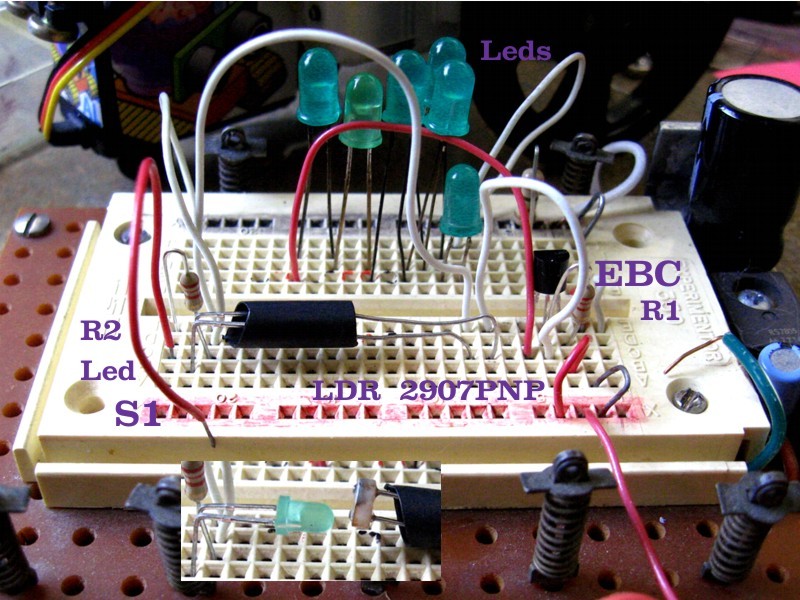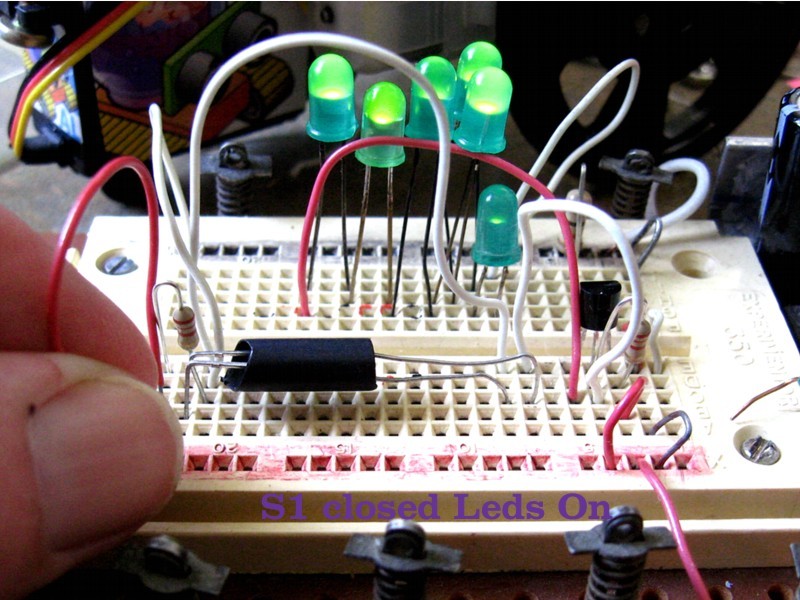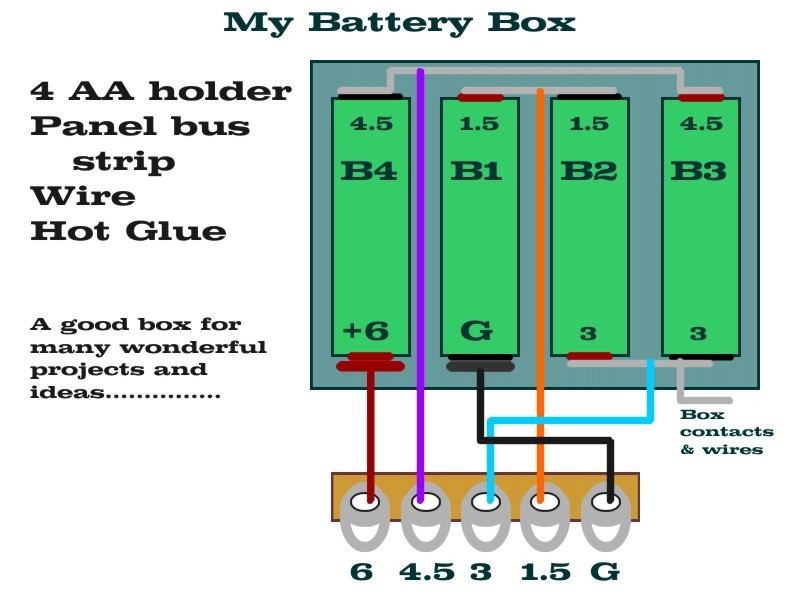Playing with transistors lets you in on what makes just about everything in our world work. Transistors are easy to work with, requiring just a few basic steps. In most cases you need to use biasing resistors to control when they turn on and off. Biasing resistors also lower the current needed to switch a transistor on and off. Biasing keeps a transistor in one of its states so it only changes states when you want it to. Biasing helps with signal flow. Generic transistors need biasing. Transistors are current devices and voltage only plays a small part in their operation.
Resistor 1 Main biasing resistor keeps the transistor in the Off or On state. Changing this resistor’s value adjust the turn On voltage and current.
Resistor 2 Input voltage and current adjustment to lower the load on what is driving the transistor. Transistors can change state with as little as 2 mA of current.
Resistor 3 Protects the load the transistor is driving. LEDs need a current-limiting resistor to protect them.
You can get packs of transistors at Radio Shack.
NPN (Negative-Positive-Negative): Switches negative voltages with positive voltage control. It has the effect of an inverter.
PNP (Positive-Negative-Positive): Switches positive voltages with negative voltage control. Also an inverter.
MOSFET: Basic performance is like an NPN transistor, but they are much more.
Parts of a transistor ————————– MOSFET
Emitter Input Voltage ———————– Source
Collector Output Voltage ——————- Drain
Base Controls the states of the transistor. — Gate
Transistors come in many formats so check the data sheets. Even generics like the 2N2222 or the 2N7906 can handle about 30 mA or maybe up to ten LEDs. They can drive small motors on small vehicles and small 5-volt relays. You can build oscillators, timed switches, animated things and much more.



